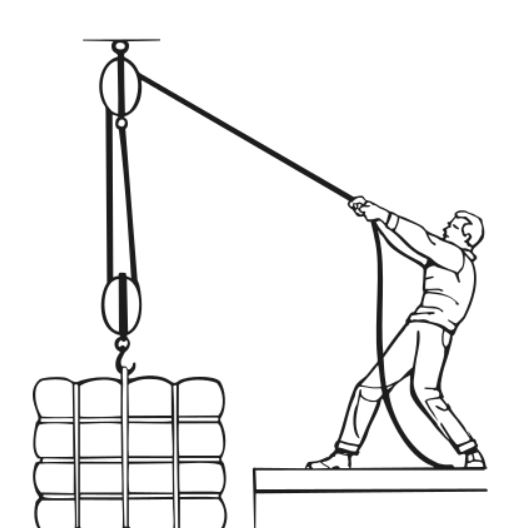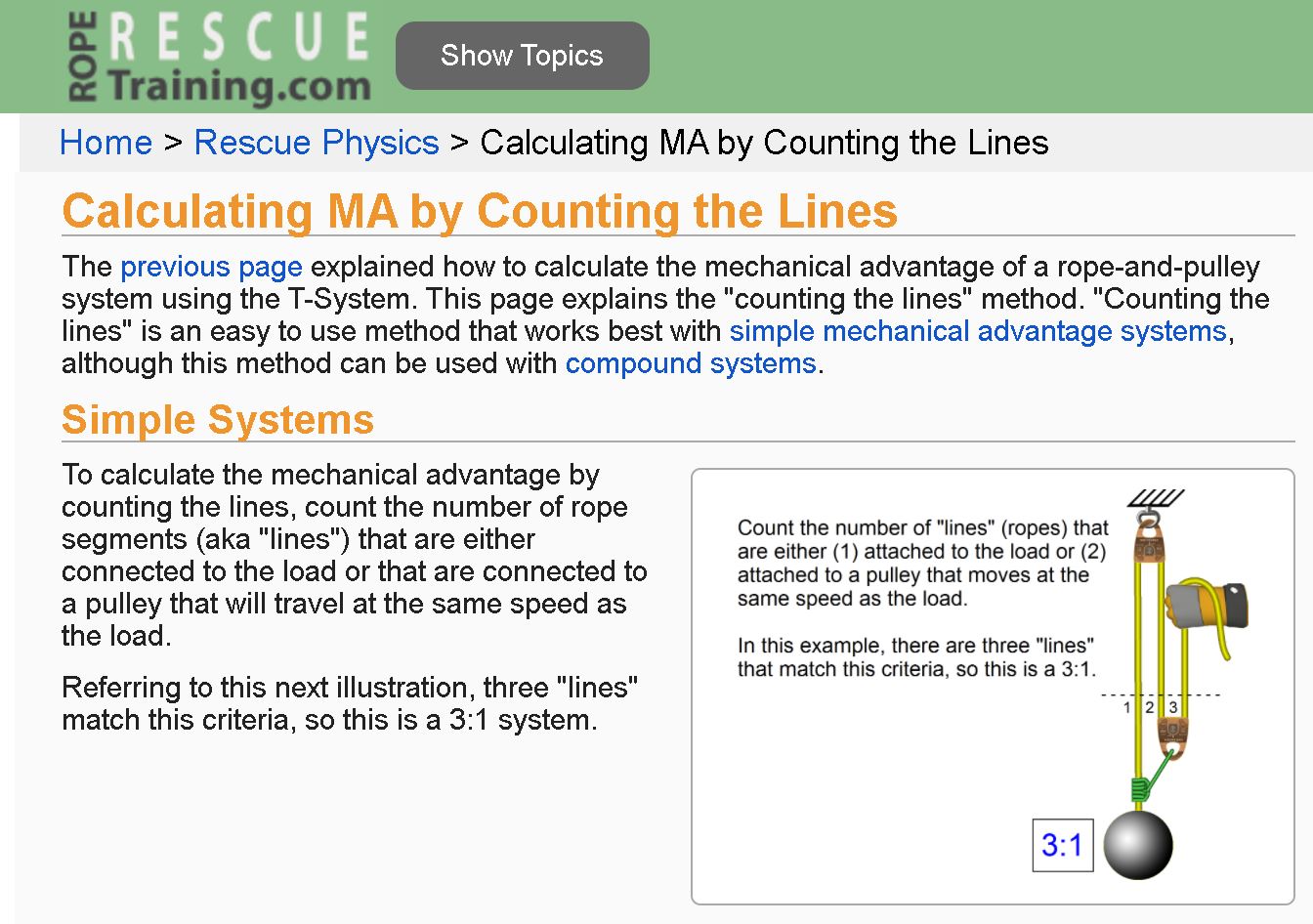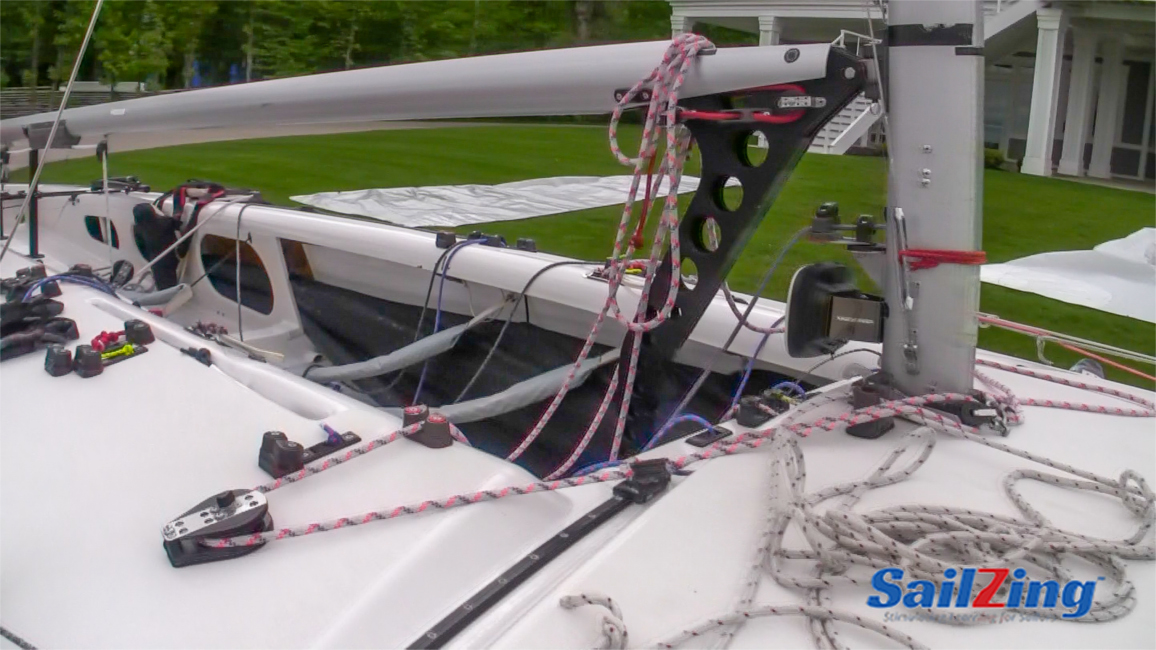In this post we introduce the topic of mechanical advantage in sailboats. We’ll show how to determine the mechanical advantage of a block and tackle system and give examples for some of the scow classes.
Humans have used pulleys and rope in a block and tackle system for a long time. According to Ronstan’s website, the first documented use of compound pulleys in a block and tackle system is that of Archimedes, and it’s almost certain they were used in the building of the famous Stonehenge in the UK.
Mechanical Advantage and Pulleys

A block and tackle system trades effort for distance; less effort is required to move a load, but you exert that effort over a larger distance. A simple example is using two pulleys to lift a weight. You only need half the force to lift the weight, but you must pull the rope twice as far. This is termed mechanical advantage or MA. In this example the MA is 2:1.
MA is sometimes called “purchase.” This term may seem strange until you realize that a block and tackle gives you gains, just as buying something does.
Designers commonly use mechanical advantage in sailboats, since the force of the wind is so strong. Some sailboat block and tackles are complex, with cascading sets of pulleys creating MAs of more than 20:1.
How to Determine the MA of a Block and Tackle System

Do you know how to look at a block and tackle system and determine the MA? There are a few different ways. We found the clearest explanations at Rope Rescue Training.com. They show two methods – the “T system” and “counting the lines.”
“Counting the lines” is the easiest method. This is not quite as simple as blindly counting lines. In summary, count the number of parts of lines in the system that are connected to the load or connected to a pulley that moves at the same speed as the load. For cascading systems, multiply the MAs of the individual systems that are cascaded.
Visit the “counting the lines” page to see how to use this approach. Then take the quiz on the page. It’s relatively easy to master this skill.
Measuring MA
Designers often hide the block and tackle system below deck or in the backbone. If you can’t see the system, you can still measure its MA. Simply pull the line a measured distance, while measuring how far the load moves at the same time. Divide the line pull distance by the load movement to get the MA.
To avoid errors, make sure there’s no slack in the system and that your result is a whole number.
Mechanical Advantage in Sailboats – Scow Examples
C Scow
C Scow MAs are not specified or limited in the class rules. See the Harken C Scow rigging page for typical layouts.
- Mainsheet – 4:1
- Vang – 6:1, with 3:1 under the deck and 2:1 above deck.
- Cunningham – 8:1, with 2:1 under the deck and 4:1 above deck
- Outhaul – 6:1, with 2:1 under the deck and 3:1 in the boom.
MC Scow
The MC class rules limit the MAs. See the Harken MC Scow rigging page for typical layouts.
- Mainsheet – not limited; typical 4:1 or 5:1
- Vang – limited to 16:1; typical layout is 4:1 under the deck and 4:1 above deck.
- Cunningham – limited to 2:1 (limit is listed as downhaul in the scantlings, which probably also applies to cunningham). Purchase is under the deck.
- Outhaul – not limited; typically 4:1, with 2:1 in boom and 2:1 under the deck.
Wikipedia article on block and tackle
Convertible Mainsheet Purchase
MC Scow Modifications
Pay Attention to Prevent Outhaul Failures




